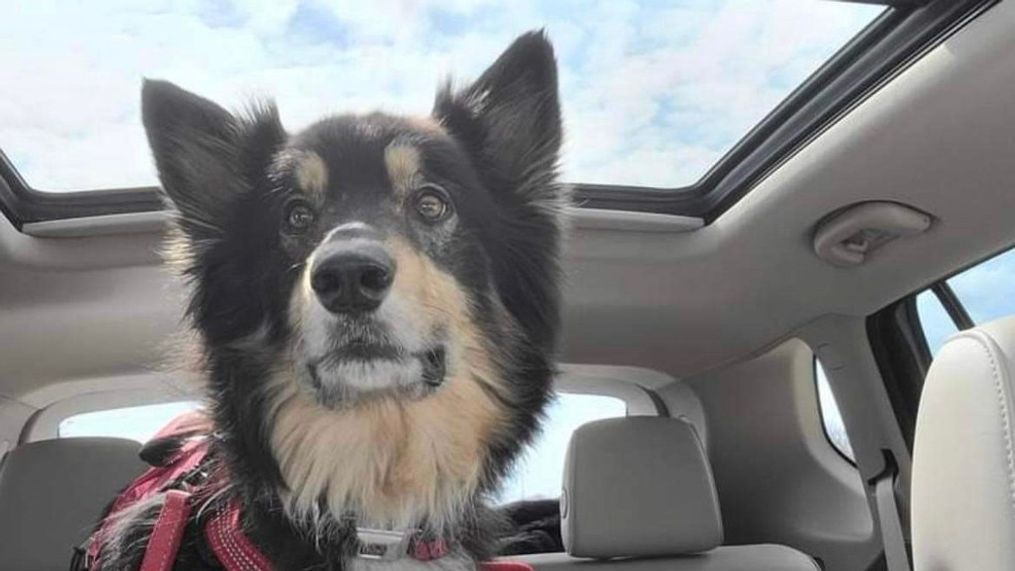Incredible 'tail:' Dog back home in Chicago after 135 days in Georgia wilderness
WHITFIELD COUNTY, Ga. (WTVC) — If canines could talk, a 10-year-old dog named Leo would have a potentially best-selling book and blockbuster movie on his paws.
Leo is wagging his tail back in his Chicago home after an adventure that lasted 135 days in Whitfield County, Georgia.
According to a post on the Facebook page of the Lost Pet Recovery Team, Leo's family stopped in Dalton for an overnight stay at a hotel Oct. 30 of last year. The family went to get a bite to eat at a nearby restaurant.
While they were eating, they suddenly saw Leo across the street from their restaurant. He had apparently opened his hotel room door and escaped. Leo's family's saga to get him back where he belongs began there.
Leo’s 'mom,' Danielle, and his 'grandmother' remained in Dalton to look for their boy.
Another family member drove to Dalton with Leo’s “buddy dog” aka “magnet dog” in hopes that would lure him out — but no luck.
Two weeks passed with no sign of Leo.
The family had to make the tough decision to head back home without him, but the Lost Pet Recovery Team said it kept Leo on their radar.
Two local volunteers joined in the search, spending the next few months putting out signs and flyers. They also followed up on reported Leo sightings.
And —crucially, as it turns out — Karen Rogers and Mary Dennard installed trail cameras and feeding stations in the nearby woods.
One homeowner spotted Leo on his security camera in December. Danielle made the trip down, and the group installed a trail camera and feeding station nearby, with items of Danielle's that carried her scent. But Leo still didn't turn up, meaning Danielle once again had to head back to Chicago without her boy.
At last, on Feb. 12 of this year, 105 days after Leo went missing, some long-awaited good news: a resident took a photo of a dog walking in the woods behind their home. It was Leo!
More Leo sightings followed the next day. The Lost Pet Recovery Team,a program of the Animal Institute, an all-volunteer 501(c)(3) charitable nonprofit animal protection organization, immediately installed eight trail cameras in places where Leo was spotted. On Feb. 19, finally, one of those cameras caught Leo laying in the forest, chewing some marrow that had been left for him.
Danielle once again made the 10-hour drive to Dalton. But once again, her hopes were dashed.
Then, on Feb. 27, another trail camera snapped a shot of Leo – but this time, it was in another area of Dalton – an entire mountain from where he was last photographed. Again, crews including Danielle set up a trail camera and feeding station with items containing her scent. Those feeding stations were refreshed each day. Danielle spent her days hiking Dug Gap Mountain, looking for Leo. But once again, Danielle had to head back home after days of searching.
At long last, on March 11, cameras captured Leo again in the middle of the night.
The Lost Pet Recovery Team put a 60-inch trap in the area and that did the trick. With a constant smile on her face, Danielle once again traveled to Georgia to finally reunite with her boy.
The Lost Pet Recovery Team says Leo finally made it back to where he belongs this week.
"If you lose your own dog, put larger posters up in the area of loss, asking people to call you. The poster should include a clear photo of the dog, the phone number to call, and the words "Do not chase!" spokesman Chris Benson said. "It should not include the dog's name. When your dog is sighted, ask people not to call out to the dog, nor chase it. They should 'be invisible' and call. Once located, a feeding station with a remote camera can be used to get the dog to settle in one location – a safe zone. Once settled, a plan to lure the dog should be established and acted upon."






